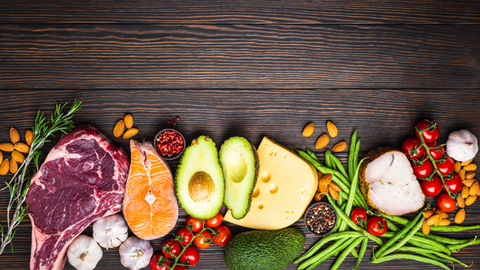
Transitioning to a restorative diet, such as the Autoimmune Protocol (AIP) diet, can seem daunting at first. Whether you're managing an autoimmune disorder or seeking overall wellness, this dietary shift promises numerous benefits but requires careful planning and dedication. Here, we've outlined a step-by-step guide to help you transition smoothly and successfully.
Understanding the Basics
Before diving into the transition, it's crucial to understand what a restorative diet entails. Typically, such a diet focuses on:
- Eliminating Inflammatory Foods: Such as grains, dairy, legumes, nightshades, nuts, seeds, and processed foods.
- Incorporating Nutrient-Dense Foods: Like organic vegetables, fruits, high-quality meats, and healthy fats.
- Prioritizing Gut Health: By including probiotic-rich foods and bone broth.
Step-by-Step Guide to Transitioning
1. Educate Yourself
Knowledge is power. Begin by researching the fundamentals of restorative diets. Understand which foods to eliminate and which to include. Resources like blogs, books, and online communities can provide valuable information and support.
2. Take It Slow
Rather than attempting to overhaul your entire diet overnight, consider a gradual transition. Start by removing one or two food groups at a time. For instance, you could begin by eliminating gluten and dairy for the first few weeks, followed by other inflammatory foods.
3. Meal Planning and Preparation
Successful transitions are often a result of careful planning. Create weekly meal plans that adhere to restorative diet principles. Batch cooking and preparing meals in advance can save time and reduce the temptation to revert to old eating habits.
Sample Meal Plan (AIP Diet)
| Meal | Monday | Tuesday | Wednesday |
|---|---|---|---|
| Breakfast | Green smoothie with collagen | AIP pancakes with berries | Scrambled eggs with spinach |
| Lunch | Grilled chicken salad | Turkey lettuce wraps | Salmon with roasted veggies |
| Dinner | Beef stew with bone broth | Zucchini noodles with pesto | AIP meatloaf with sweet potatoes |
4. Stock Your Kitchen
Purge your pantry and fridge of non-compliant foods. Restock with AIP-friendly ingredients such as coconut flour, cassava flour, high-quality meats, and fresh produce. Brands like eat G.A.N.G.S.T.E.R. offer convenient baking mixes that are AIP-friendly and can make your transition easier.
5. Find Your Support System
The journey is much easier with support. Join online forums, social media groups, and local meetups dedicated to restorative diets. Sharing experiences, recipes, and tips can provide motivation and camaraderie.
6. Listen to Your Body
Pay close attention to how your body reacts to the changes. Keep a food diary to track symptoms and identify any food sensitivities. This can help in fine-tuning your diet to best suit your needs.
7. Manage Cravings and Emotional Eating
It's normal to crave old comfort foods, especially during the initial phase of transition. Plan for these moments by having AIP-friendly snacks on hand. Emotional eating can also be a hurdle; practicing mindfulness and stress-reducing activities like yoga or meditation can be beneficial.
Bonus Tips for a Smooth Transition
- Hydrate Well: Drink plenty of water to aid digestion and detoxification.
- Sleep and Rest: Quality sleep is essential for healing and balancing hormones.
- Exercise: Engage in moderate, regular physical activity to support overall health.
Embrace the Journey
Transitioning to a restorative diet is a personal journey. There may be challenges, but the potential health benefits make it worth the effort. Remember, it's about progress and not perfection. Celebrate your small victories and focus on the positive changes you're making for your health.
If you ever feel overwhelmed, turn to supportive resources and communities. And don't forget to indulge in delicious, compliant treats—like those from eat G.A.N.G.S.T.E.R.—to make the journey enjoyable.
Conclusion
A smooth transition to a restorative diet requires planning, support, and patience. Educating yourself, taking gradual steps, planning meals, and finding community support can make the shift easier. Embrace this journey towards better health and enjoy the freedom and joy that comes with a restorative diet.
For more details and AIP-friendly products, check out eat G.A.N.G.S.T.E.R.. Your pathway to a healthier, happier you begins with the right choices today.



